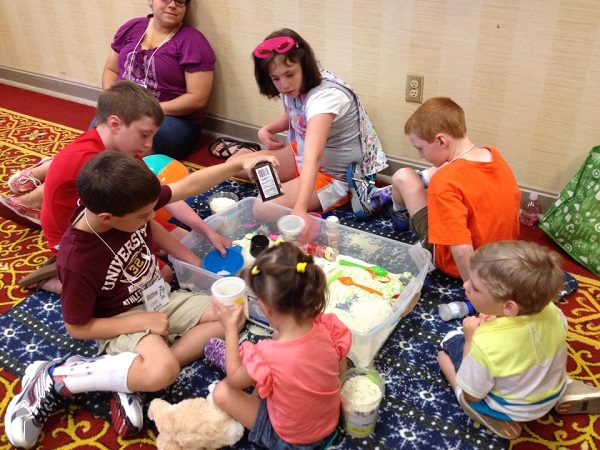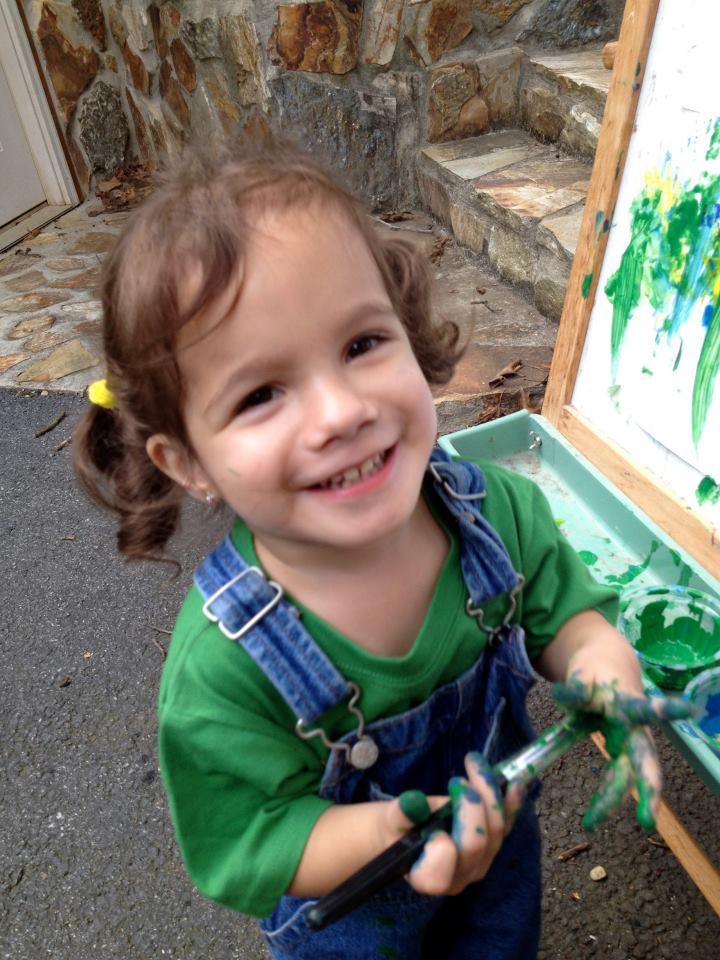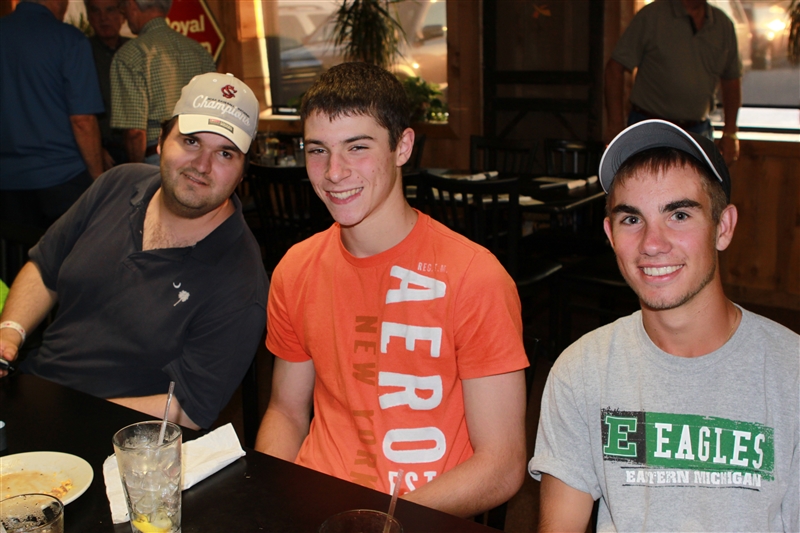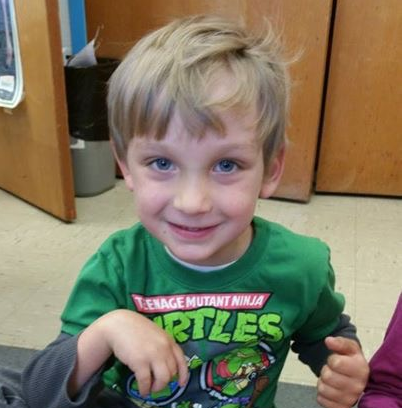Also available as pdf file: Hand Play PDF
A child with hemiparesis sometimes has excess muscle tone in the hand. They may have problems isolating finger movement, turning their hand over (palm up), holding their wrist at a proper angle, and grasping and releasing objects. The information on this website has been gathered from parents of children who have hemiplegia. This information is not a substitute for therapy administered by a trained therapist. You should consult your child’s physician or therapist before trying these activities.
What is a Pincer Grasp?
This is the motion you use when you try to pinch something between your thumb and index finger (the finger next to your thumb). It involves pressing the pads of your thumb and index finger together. This movement helps us pick up small items.
Developing a Pincer Grasp
- Picking M&Ms out of an egg carton
- Water Bottle Fun. Using clear plastic pop bottles. Using tweezers and chop sticks, have the child place items in the empty bottle (we had removed the label and washed them first). Items can be anything that will tolerate being in water such as plastic flowers, glitter, metal confetti, etc. Then fill the bottle with water which is colored or plain. If you are concerned about the child opening it, you can tape or glue the lid on. This engages the hands and is visually appealing.
- Place stickers on the non-affected hand/arm. This way the child has to use the affected hand to remove the sticker. My preschoolers love stickers and love to make pictures with them. A word of caution: to lessen the hold of the sticker, place it on a shirt, etc to minimize the adhesive before placing it on the child. Some of the adhesives are really strong.
- Squishy Games for Pincer Grasp with silly putty, play-doh, Sculpey, bread dough, modeling foam, clay or therapy putty: Break off pieces of putty and roll between thumb and finger to make small balls; if too difficult, start with opening hand and squishing a putty ball into a pancake on the table; pull off pieces of putty using thumb and a finger and drop in a container
- Tissue paper scrunching is a really low tech exercise. Have the child crumple up p bits of soft paper and then throw them round the room. Then they have to chase them by walking or crawling and pick them up with their toes. This helps with hands and feet!
- Fun Pincer Grasp Games: Spinning tops, pick-up sticks, Jenga, Don’t Spill the Beans, wind up toys, tiddly winks games, Ants in the Pants, Lit Brite, pegboards, Operation game, Crocodile Dentist, Bedbugs
- Clothespin or Chip Clip Games: Place clothespins or chip clips along the top of a container, edge of clothing, then take off; string a line between two chairs and have fun hanging pictures – tell a story with the pictures and get in some mental sequencing work at the same time
- Fun Construction Toys: Mega blocks, Bristle blocks, Legos, K’nex, pop-beads, linking chains, Cootie game
Join other families of kids who have hemiplegia in our CHASA Facebook Group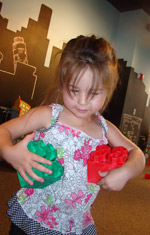
Supination Ideas (Turning the hand over, palm up)
- Ringing water out of a towel by twisting it.
- Turning pages of a book.
- “Guess which hand” games, where something is hidden in one hand, the partner guesses which by tapping the guessed hand, and the hider turns both palms up and opens her hands. If correct the guesser gets a point. If not, the hider gets the point, and so on.
- A simple “Slinky” is a great toy to encourage supination.
- Build with cones (I use discarded spools from textile factories). We build towers or set them up for “bowling”, etc. If you place or the child grasps the cone closest to the thumb, the child has to actively supinate at least to neutral to effectively place the cone.
- For older kids, grasping a magnet (adapt type and size to the child’s needs) and guiding a magnetic “car” along a path (the path is drawn on oaktag or similar thin but sturdy paper). The path is held with the non-affected hand and the child holds the magnet in the affected hand, under the path to guide the car.
- Benik splints with the supinator straps, especially for children with some active supination.
- Another idea is sand or water play. Scooping up sand or water and pouring into another container, or sand/water wheel toy (Discovery Toys has a good one). Making sand castles, etc use the pronation/supination.
- Using a snack activity such as scooping and eating pudding.
- Placing stickers, stamps, etc. on the inner arm – turn to look at it.
- Playing with money and reaching for change
- “Give me five”
- Fill plastic Easter eggs with varying items; the easier it is to make a sound, the easier the child needs to work. Things that don’t make sounds easy make the child work harder. You can actually do a number of motions with these. Supination to pronation, flexion to extension of either the wrist or the elbow, crossing the midline…
- Hiding little stickers on the bottoms of large pegs in a pegboard
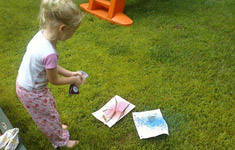 Sensory Activities
Sensory Activities
- Playing in rice, sand, different textures
- Weight bearing provides sensory input
- Be sure to include lots of bilateral activities so she is actively using both hands together. Not a lot of two year olds tolerate direct handling to an affected side, so you need to be creative and fun. You may also want to consider a neoprene splint if she continually rests her hand in a fisted position.
- A tray full of – chocolate pudding, whipped cream, jello – makes a great place to “paint” with two hands – also nice to lick the stuff off both hands.
- We also do the pudding on a marker board easel to help with her wrist
- The classic containers of rice, beans, sand for weight bearing. Just have them get a small tupperware container and bury treasures in it.
- Weight bear on the affected hand into the container while she searches for treasures or search with the affected hand. (Also, works for toes and feet).
- Paint fingernails wild colors to stimulate interest in her hand.
- Colorful handsplints and rings and bracelets.
- Bugs, so we let those rollie pollie bugs crawl on her affected arm – she thought it was very funny. She often painted her arm with washable markers, I think seeking stimulation, and we let her do this.
- Refrigerated cookie dough is wonderful for play with both hands.
- “Indoor bean sandbox”. Take a shoebox sized tupperware and filled it with all kinds of raw beans and macaroni noodles, etc. Use it just like a sandbox with shovels and pails, etc.
Different thoughts on hand therapy for children with hemiplegia
- Bilateral upper extremity weight bearing activities and unilateral reach to both side (works on lengthening the involved side)
- trunk rotation (both ways)
- bilateral activities where both hands move together and where one hand stabilizes and the other manipulates
- bilateral and unilateral reaching in different planes in a variety of positions
- holding large light objects when walking such as a ball.
- In terms of grasp try to stabilize the arm as much as possible when grasping eg. rest forearm on the table initially.
- Need to work on wrist extension also for a good grasp. Keep in mind that you may only get to a functional assist on that side.
- A soft thumb abduction splint will probably help with grasp
- Wheelbarrow walking is great for weight bearing.
- Bilateral coordination tasks: pushing a swing with both hands, scooter in prone propelling with both hands, and waving bubble wands in the air with the affected hand is a good way to make it fun!
- To encourage reaching with the involved hand, position the child so that the involved side is close enough to reach to touch a lamp which would turn on and off by touch.
- Cozy coupe cars are great for children with left hemiplegia. Encourage the child to open the door by pushing with left arm. It also helps develop lower extremities to power the car.
- Use squishy balls to squeeze or toys that required gripping in 2 hands. McDonald’s Happy Meal toys often require two hands (I know you love this idea as much as I do!)
- Finger foods like pizza and burgers were also helpful in getting the hand involved. Have the child pick up every other potato chip with the involved hand with assistance.
- Try to incorporate these activities into everyday play and routines.
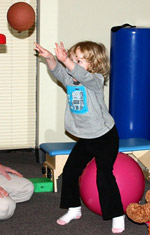 In the kitchen
In the kitchen
- Have the child hold onto the mixing bowl with the affected hand and stir with the other hand
- Help unload the dishwasher with the affected hand pulling out all of the silverware
- Putting up boxes of cereal, etc. when unloading the groceries.
- Pouring just about anything – hold cup with affected hand (find one that’s the right size)
For the wrist
- Finger painting on easel.
- Shaving cream on the wall of the bathtub.
- Colorforms on a mirror – puts on and pulls off with affected hand.
- Leaning into the wall with the affected hand while she paints a picture.
- Batting a lightweight ball or balloon (like volleyball).
- Play dough activities, pretend cooking (flipping pancakes), and the shaker bottles with corn syrup and glitter, plastic confetti, etc. (can make your own with water bottle, or small plastic bottle).
- Toys with the keys you turn, toy oven knobs, etc.
…playing ‘waiter’ (hold the tray under the bottom side with one hand)…turn keys in a treasure chest to open it…
Weight bearing
- Wheelbarrowing
- Side sitting and weight bearing while we play board games or do puzzles.
- Pretending we’re animals and crawling through the jungle (I mean house!). Take the cushions off the sofa and chairs – jumble them up and hide toys
underneath – have child crawl up and over cushions and weight bear on hand while reaching for toys.
Bilateral activities
- Catching balls.
- Carrying containers of toys when we clean up.
- Opening packages of CANDY (much motivation) and baggies of food.
- Lots of two handed baby toys – those popping beads, duplos/legos.
- Dressing Barbies.
- Emptying the trash cans.
- Clearing the dinner table (buy non-breakable dishes).
- Zoom football that’s on a string.
- Trapeze bar swing in the backyard.
- Stringing beads.
- Sewing – get a embroidery hoop and place fabric in this – hold onto hoop with affected hand and sew with other hand.
- Holding paper down with affected hand and drawing
- Holding paper with affected hand and cutting –
- Pushing a laundry basket with two hands on the floor (fill with heavy phone books, cover with a baby blanket and then put baby doll inside) – do it on
knees and get in some leg work also.
Balance
- There’s a toy called a jump-o-lene that’s inexpensive and great for helping with balance.
- Walking on curbs with arms extended.
- Wrestling for fun.
- Lots of swinging at the park.
Music and hand play
- Percussion instrument like the marimba might be a good one,
- The glockenspiel
- A tambourine is also a great instrument to use for supination/pronation because it is so visual. Get one of those cute animal ones for children that has a handle in the middle. The weight is more easily distributed.
- He might be able to develop the fine muscle movements needed for writing by doing exercises on the keyboard/piano geared for strengthening. There are some great books available, and he can do the exercises whether or not he knows how to play the piano. The key thing is that he gets feedback-he makes sound when he plays.
- In terms of the right brain/left brain ability, music is one of the only activities that a person can do that requires the whole brain.
Join other families of kids who have hemiplegia in our CHASA Facebook Group
Fingertip force control during bimanual object lifting in hemiplegic cerebral palsy. March 2008, The Netherlands.
Development of hand function among children with cerebral palsy: growth curve analysis for ages 16 to 70 months. July 2003. Ontario, Canada.
Hand function in children with hemiplegic cerebral palsy: prospective follow-up and functional outcome in adolescence. 2003. Italy.
Problems with Grasp – Found in the book Motor Control: Translating Research into Clinical Practice



